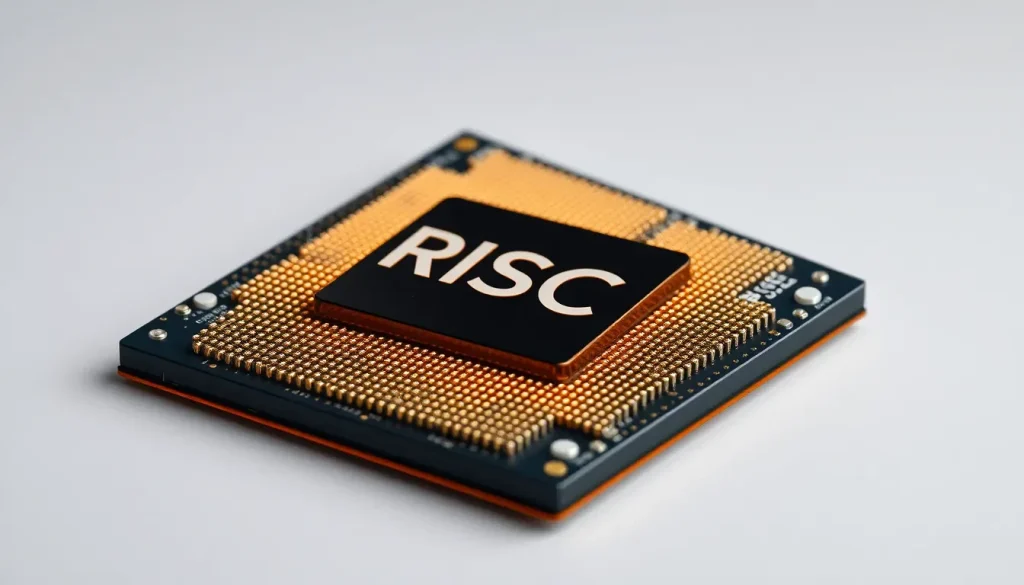RISC-V achieves over 25% market penetration in CPUs

In the evolving landscape of processors, the names x86 and Arm often dominate discussions. Traditionally, Arm has been the go-to architecture for smartphones, gradually making its way into laptops and server CPUs. On the other hand, x86 powers most traditional PCs, laptops, and workstations that demand high performance. Yet, amidst these well-known giants, RISC-V is steadily gaining traction, recently announcing a groundbreaking 25% market penetration in 2025. As we delve deeper into RISC-V, we uncover its potential to reshape the future of computing.
Market Penetration of RISC-V: A Significant Milestone
According to RISC-V International, analysts from SHD Group have reported a remarkable achievement: RISC-V has reached a 25% market penetration as of 2025. This milestone suggests a substantial increase in its market share compared to other Instruction Set Architectures (ISAs).
The significance of this figure lies not only in its numerical value but also in what it represents for the future of computing. RISC-V's open-source nature allows for customized chip designs, appealing to a diverse range of companies and developers. With over 10 billion RISC-V cores in use globally by the end of 2023, this architecture is quickly becoming a preferred choice for many.
RISC-V's flexibility is a key factor contributing to its rapid adoption. Unlike x86 and Arm, which come with licensing fees and restrictions, RISC-V's open standard allows any company or individual to create chips that meet specific needs. This drastically reduces development costs and time-to-market, making it an attractive option for startups and established companies alike.
RISC-V's Advantages Over Traditional Architectures
While x86 and Arm are well-established, RISC-V offers distinct advantages that set it apart:
- Customizability: Companies can design processors tailored to their applications without worrying about licensing fees.
- Cost Efficiency: The absence of royalties lowers the overall cost of chip development and production.
- Open-Source Nature: The architecture is open for anyone to use, encouraging innovation and collaboration.
- Scalability: RISC-V can be scaled to suit a variety of applications, from simple embedded systems to complex servers.
- Growing Ecosystem: A rapidly expanding community of developers and companies is contributing to its growth, enhancing tools and libraries.
These advantages position RISC-V as a competitive alternative in markets where cost and efficiency are paramount, especially in embedded systems and IoT devices.
Growth Projections and Future Trends for RISC-V
The outlook for RISC-V is increasingly optimistic. Analysts predict that its market share could grow significantly in the coming years. By 2030, estimates suggest that RISC-V could claim a 25% market share with around 17 billion chips sold.
As major players like NVIDIA and Qualcomm adopt this architecture, RISC-V is poised to disrupt existing markets. Despite its current limitations in high-performance computing compared to x86 systems, its cost-effectiveness and flexibility offer a compelling case for a wide range of applications.
Furthermore, projections indicate that by 2031, RISC-V could see sales exceeding 21 billion chips, generating more than $2 billion in revenue, partly driven by the growing demand in artificial intelligence (AI) sectors.
The Role of RISC-V in Current Technologies
While RISC-V may not yet compete with x86 in high-performance scenarios, it is increasingly used in various emerging technologies. Its capabilities in AI, machine learning, and edge computing are gaining attention. Companies are exploring how RISC-V can be integrated into their devices for enhanced performance and efficiency.
For instance, some developers are experimenting with emulation to run popular games on RISC-V. One notable example is The Witcher 3, which has been tested on RISC-V architecture, albeit with modest results of around 15 FPS when emulated.
As we look forward to the official data release on October 21, 2025, the tech community eagerly anticipates how RISC-V will redefine its role in the processor market.
Challenges and Considerations for RISC-V Adoption
Despite its advantages, RISC-V faces several challenges that could hinder its widespread adoption:
- Performance Gaps: RISC-V currently lags behind x86 in raw performance, which may deter high-end users.
- Market Awareness: Many potential users remain unaware of RISC-V's benefits and capabilities.
- Development Ecosystem: While growing, the ecosystem around RISC-V tools and libraries is not yet as mature as those for x86 or Arm.
Addressing these challenges will be crucial for RISC-V to establish itself as a mainstream choice in the processor landscape.
Does Tesla Utilize RISC-V Technology?
Among the companies exploring RISC-V is Tesla. The automotive giant is known for its innovative approach to technology, and its potential use of RISC-V could indicate a significant shift in how automotive systems are designed. Utilizing RISC-V would align with Tesla's goals of reducing costs and improving the efficiency of its embedded systems.
For a deeper understanding of the future of RISC-V, check out this insightful video:
As the landscape of processor architecture continues to evolve, RISC-V is emerging as a formidable contender. Its open-source nature, combined with its flexibility and cost advantages, positions it well for the future. As more companies adopt this architecture, we may witness a significant shift in the way processors are designed and utilized across various industries.



Leave a Reply